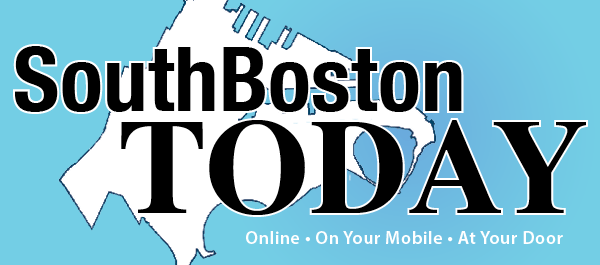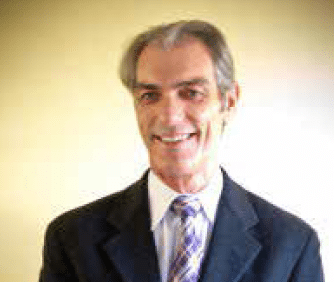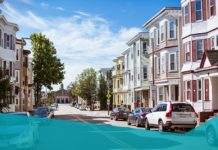by Brian R. Mahoney
(In Memoriam)
Evacuation Day is the official name and recognition of this day. St. Patrick’s celebration is a creation of the Boston Irish in general but the South Boston community in particular. Unlike these celebrations in other cities, the anti-Irish discrimination in Boston for many years prevented that.
The military event itself was 239 years ago, but this is only the 108th observance. The root of this disparity goes back to the Emerald Isle itself. The Irish, of course have never accepted the occupation or partition of their country by the English. The history of that ongoing struggle is well documented and won’t be recounted here; however, while the discrimination faced by the Irish elsewhere was of the variety that all strangers and newcomers had faced in Boston, it is a continuation of the Irish-English feud brought to America.
As such the Brahmin establishment was the political and business power, the Irish existed as servants, maids, and laborers. The wave of immigrants in the late 1840’s had two effects. The slow but steady rise of political power for the Irish and the immediate creation of the anti-Irish, anti-immigration and anti-Catholic political organization named the “Know-Nothing” party, so called because of their secret meetings and the “I know nothing” response when asked. In fact, they were more powerful here than anywhere else in the country. The influence was felt in all municipal precincts. Their advocates on the Boston alderman council introduced an ordinance designed to keep the Irish immigrants in the sprawling Fort Hill Ghetto (Purchase Street and Atlantic Ave. area) out of the abutting Beacon Hill Brahmin enclave by creating a night patrol wagon to take into custody and remove “vagrants and undesirables” in that area after dark.
Everyone knew its true purpose and it soon was called the “Paddy Wagon”, an insult if directed at any other community that would have the “politically-correct civilian police” up in arms. When challenged, we were told, “don’t be so sensitive”. That insult is still in common usage. As the Irish began to assert themselves in business and politics, a middle and upper class, eager to build their social and religious culture, began to emerge.
St. Patrick’s Day had been observed intermittently as far back as 1736 by Protestant Irish British soldiers. St. Patrick’s Day is a shared day ever since King Henry VIII created the Church of England. In 1847, a group of Irish business men had a small procession to a religious service and then to a banquet at one’s home. They were reluctantly tolerated and the gatherings on St. Patrick’s Day were small and scattered.
The Civil War and the large Irish contribution, particularly from Boston, created a greater sense of the Irish accepted as citizens. Also, the first generation of the great immigration of the 40’s was coming of age. One of the great Irish benefactors, Andrew Carney, made an investment that would prove crucial. The Purchase St. Unitarian Church of Fort Hill had been built in 1821 on the spot where British troops had huddled in 1776 against a March “hurricane” preparing to assault Dorchester Heights. With the influx of Catholic Irish they moved out and abandoned their church. In 1848, using a third party straw, Carney purchased the church and it was reconstructed as St. Vincent de Paul Catholic Church. This Church christened, married and buried more Irish Catholic immigrants than any church in existence today. It became virtually the only church for the teeming waterfront immigrants.
In 1871 Fort Hill residents learned of a plan to demolish the neighborhood called “America’s first ghetto”. The parishioners of strong faith disassembled the church, put it on barges and floated it across to what is now the area of “E” and Third St. where it stands today. Its dedication in 1872 joined Saints Peter and Paul, St. Augustine and Gate of Heaven in placing an Irish Catholic Church on South Boston’s four points and were virtually all Irish Catholic.
St. Patrick’s Day celebrations again began occurring in greater numbers throughout Boston which the Brahmin continued to squelch. Finally, the Catholic and business community began a concentrated but fruitless campaign to circumvent resistance by celebrating Evacuation Day coincidentally with the day of St. Patrick’s Death.
Authorities were always fearful of large numbers of congregating Irish and always resisted the remembrance of the Evacuation for just that reason. However, prompted by the lobbying effort of the South Boston Citizen’s Association, Commonwealth and private funds were allocated for constructing Dorchester Heights Monument and in 1902 the first real Evacuation Day was held after the monument’s dedication.
Except for stoppages at points in WW I and II, and the protest cancellation of the 1994 Evacuation Day officially and St. Patrick’s Day unofficially has been held ever since. “Irish Need Not Apply” signs were still being displayed publicly through at least 1920 and are still alive and well, it seems based on yet another attack this year.
Critics maintain that we in South Boston don’t understand and appreciate the religious struggle in Ireland. On the contrary, we understand all too well. It is the critics who are ignorant. The Irish were never denied the right to practice the Christian religion, as long as it was the government approved religion. Practice the Catholic Christian Religion and they were hung.
Those same critics tell us we have the First Amendment and Freedom of Speech in South Boston, except that it’s the politically correct and government kind. If not, then we can’t use our parade to speak or express our message.
Believe me we know what’s going on and Happy St. Patrick’s Day.
Take care till next week.










